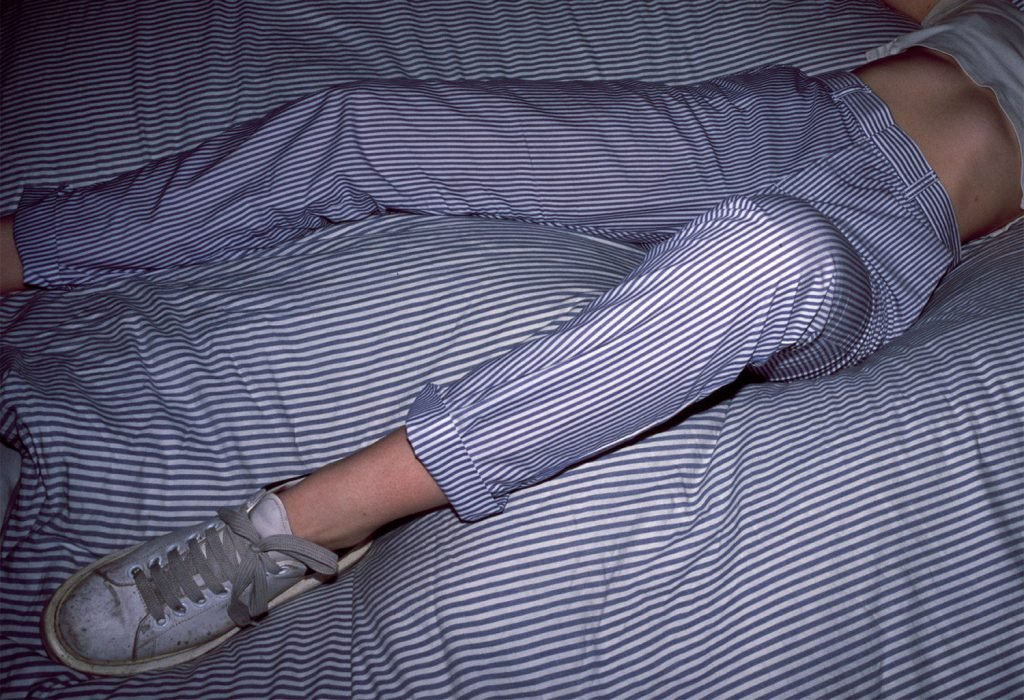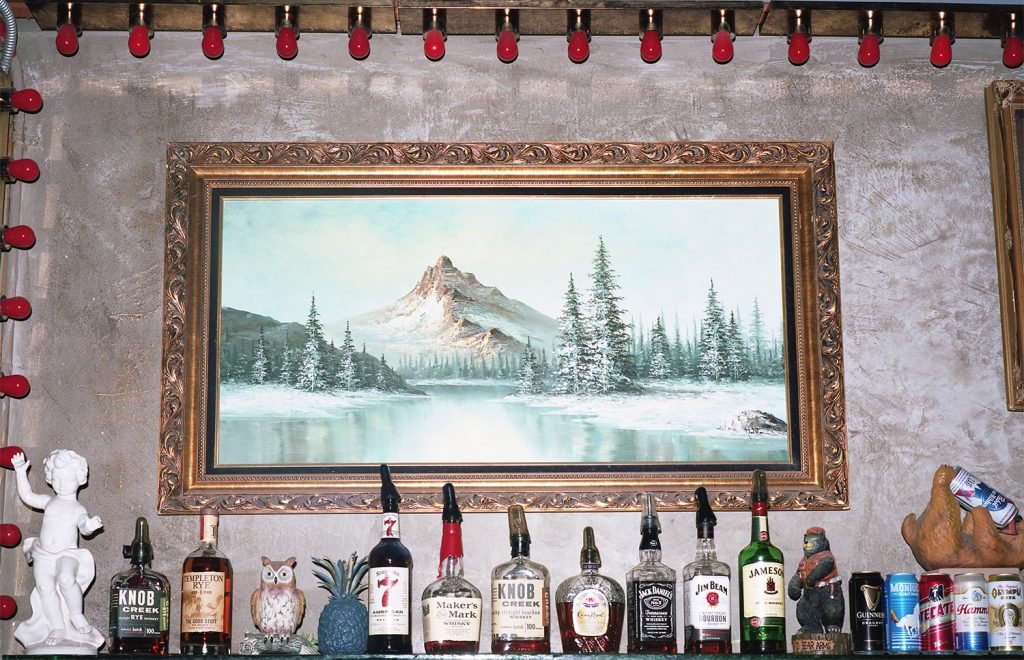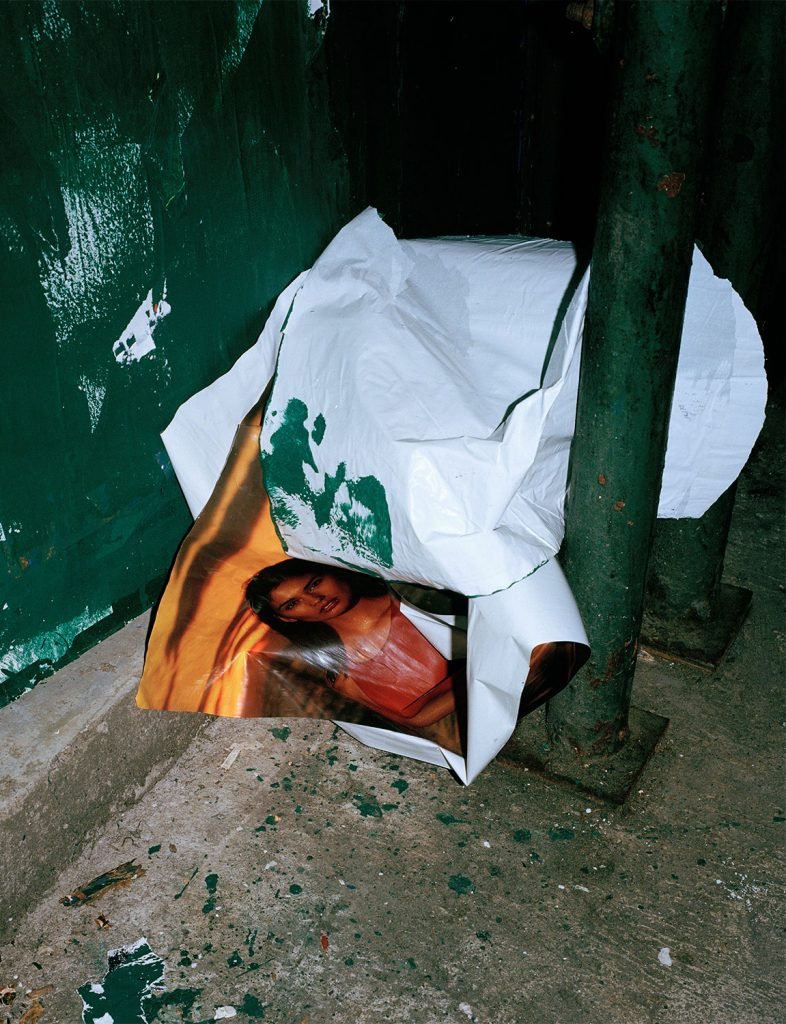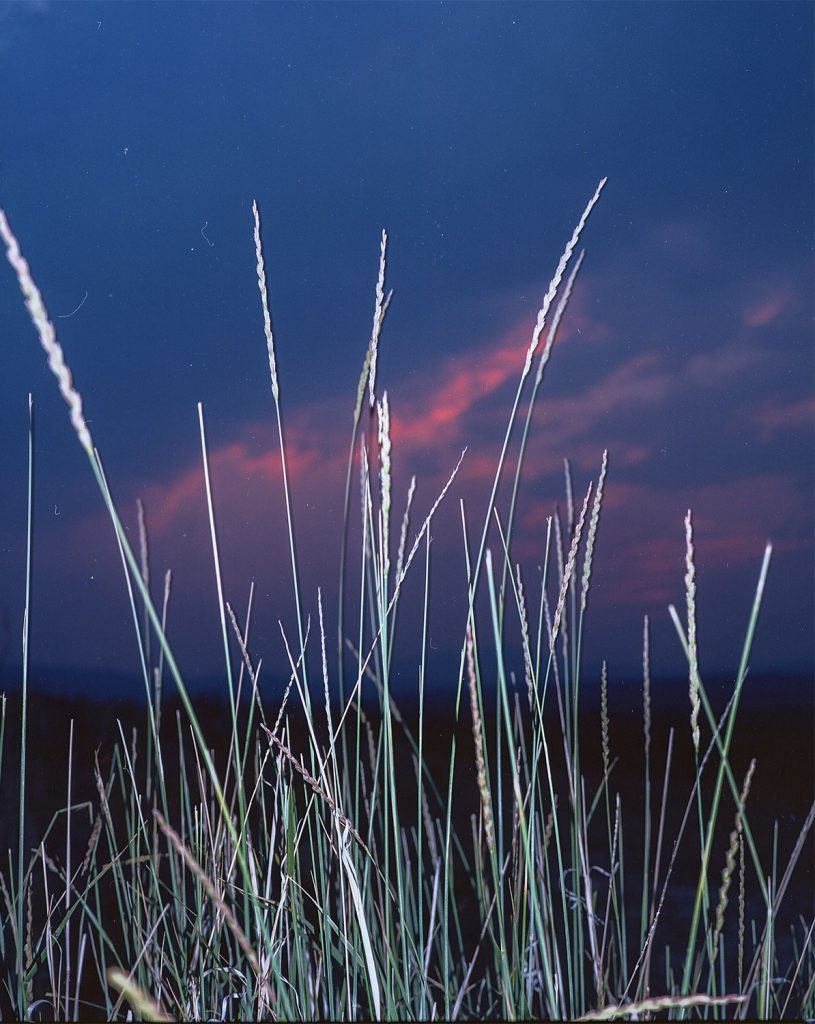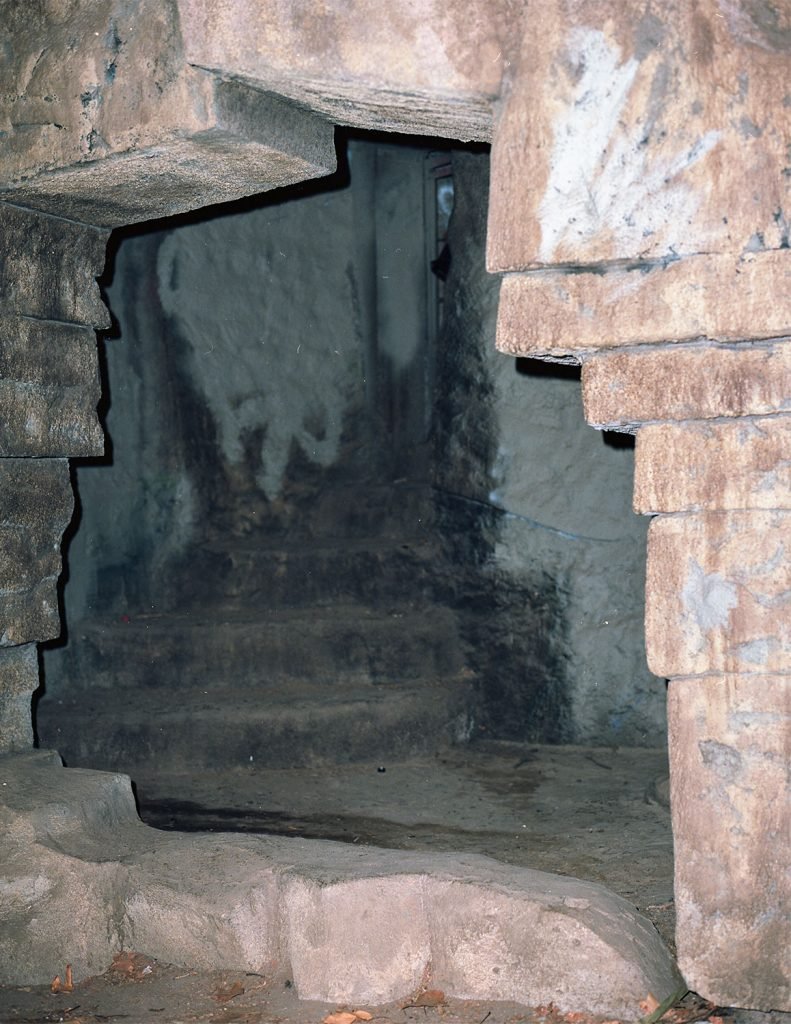Julien Kelly-Gross is a twenty-one year old photographer currently living and working in Los Angeles. Julien has been photographing LA’s growing music scene since early 2012 but has recently changed focus and is now working in a social documentary mode, photographing the people and environments that are provided to him. Before moving back to Los Angeles, Julien spent two years in the Oakland CA, where he studied photography at California College of The Arts. Taking great inspiration from both Nan Goldin and Stephen Shore, Julien’s work functions as a curious dissection of the anxiety of youth as well as the pleasures it may hold.
Christian Michael Filardo: Julien, can you tell us a bit more about your process and how you go about creating an image? Where are you? How are you?
Julien Kelly: I’m in LA and I’m doing great! Those two things actually inform my process a lot. I try to carry a camera with me most places I go although recently I’ve been lazy. I usually find myself taking pictures of things I’m curious about or find attractive. I try to apply human emotion to objects in a lot of my photos. Taking something out of context and making it resonate as lonely, angry, or sexy is a fun idea for me. A lot of the time I’ll take a photo and not realize the sentimental or subconscious connection I have to the subject until I get the negative back. I’m trying to be more intentional with my work but I don’t know if it’s working.
CMF: Can you tell us a bit more about your fascination with the personification of objects? What are you doing to find that intentionality you speak of? I feel like your images capture a very specific type of night life, are you in a band? Are you on tour?
JK: I’m not in a band but all my friends are. It’s been that way since I got into high school and has somehow continued, not complaining! I started really getting into photography by shooting the music scene in LA which is something I still participate in. Doing concert and house show photos forced me to be shooting at night and with a flash which is still one of my favorite ways to make photos. Something about the anxiety and restlessness of the evening in LA caught my attention at a pretty young age and I’m still trying to figure out exactly how I feel about the night through my pictures. I have gone on a couple of tours with friend’s bands and I shoot pretty much non-stop. New places really get me into an organic mode of photographing that’s hard for me to replicate in any place I spend long periods of time in. The less preconceived notions I have about a place the more I’ll be able to get out of it photographically. I think that relates to my personification of objects, if I don’t understand something immediately, the more likely I am to abstract that object in a way that is specific to the way I feel about it.
Curiosity is the catalyst for most of my photos and I guess that’s where I’m trying to be more intentional as well. Taking a photo out of curiosity is fine but analyzing that curiosity, it’s meaning, and how it relates to the subject is what I’m trying to do more of.
CMF: Living in LA are you actively “going out” to shoot more? Getting in a car and going to a specific spot? You have an interest in book making and publishing, can you tell us a bit more about that? What’s inspiring you right now? Can you try to describe the restlessness of a Los Angeles evening?
JK: “going out” to shoot is something that I’ve been trying to do more. Going to a place with the sole intention of taking photographs is sort of daunting to me because I start putting a lot of pressure on myself which is never helpful. It’s the direction I want to move in though so I’ve been trying to do it a couple times a month just to stay loose.
Being in a car for long periods of time is an inherent part of living in LA and it has obvious drawbacks, but there’s a lot to be gained from it as well. I get a lot of my ideas while I’m in traffic. I think really clearly in the car. The LA night is restless but not entirely unique in that sense. I think the way I photograph LA at night is basically the same way I photograph New York or San Francisco which might say more about my own feelings about the night rather than the city itself. Book making is a new passion of mine and is something that I’ve been focusing on a bit more than actually making photos right now. I took a book class while I was still in school in the Bay Area that was centered around photobooks and it totally changed the game for me. I had loved photobooks before the class but my main exposure was to the giants. Eggleston, Shore, Goldin, etc.
Discovering the art book community within the Bay and later LA, has been inspiring and validating. It’s pushed my perception and expectations of what a book should or could” be. Recently, I’ve been super inspired by the small publishers in LA and the Bay. Eggy Press in Berkeley is amazing and is putting out some incredible work from artists of all mediums. Fulcrum Press and The Ice Plant in LA were some of my favorite publishers prior to moving back so opening up a dialogue with them has been amazing. Overall, I’m just inspired by publishing at the moment. I won’t say too much too soon but I’m in the early stages of starting my own press which has been exhilarating to say the least.
It’s not something I ever saw myself actually doing, but once I had the idea (in traffic) I couldn’t get it out of my head.
CMF: Julien, can you speak to what it feels like to reach a moment of clarity? It sounds like you are inspired by early American color photography legends, can you tell us about a few artists that inspire you that might be your peers or a little bit more contemporary? I often associate driving with being a passenger, can you speak to this in relation to your photographic practice?
JK: A moment of clarity for me is when I realize the relationship between a photograph and my perception/conception/emotion. This usually happens way after the fact if it happens at all, but it always feels nice when it does. Sort of like my subconscious reaffirming itself. I love the legends but have been finding myself slowly drifting away from them or at least becoming more critical of their work. Recently, I’ve been gravitating towards work that’s sort of the opposite of mine both in tone and setting. Sam Contis’s work is incredible. She came and spoke to a class I was in about her book “Deep Springs” and it really stayed with me. Morgan Ashcom is fantastic (I’m a sucker for MACK) and John Gossage as well. I’m fascinated with how the photographer cultivates space. When photos accumulate with intentionality and begin to create a place that is both real and unreal it is a very exciting moment for me. Having a camera with me automatically makes me a passenger. For me it’s important to be in the passenger position, one of passive observation, to make photographs that are both intentional and composed. I think a lot of my work is pretty casual and, on the fly. I like that. It’s important for me to not put too much pressure on photographing. I just try to look around, see what’s happening and focus on what I like about it. I admire a lot of photographers who I feel are not passengers to the situations they are presented and take full control whether it’s in a studio or out in the world.
CMF: It’s understandable how someone can feel so excited about what MACK does. They are running the game when it comes to photography books. I’m really curious about you Julien because I feel like your eye is really good but I’m really trying to understand what makes you tick. What’s the motivation? Do you use photography to comprehend the world around you? Are you harvesting information for something that will exist later? I want to know about the space you are trying to cultivate. I’m not asking you to put a pressure on your photographs, rather I’m curious about what you need them to say and why. Could you elaborate for me?
JK: I think in a lot of ways all photography is about death to some degree whether it’s through the photographer’s relationship to what they’re capturing or the subject itself.
The idea of mortality is something I really struggled with growing up, not for lack of understanding but because of the clarity I had around it at a very young age. I’m not what you would call an anxious person, but I have a certain restless unease that can manifest in a lot of different ways. I’m fascinated by things that can act as visual representations for that unease. I use photography to comprehend the world around me but more so to comprehend the way that I process the world and explain that visually. I’m endlessly excited and simultaneously terrified by the human experience and I think a lot of my work operates somewhere in a space between those poles. I don’t understand a thing more by taking a picture of it, but in choosing to take a photo I get to analyze my own relationship to the subject and apply that to the way I portray it. Any photo is going to be subjective. Maybe I’m trying to collect images until they eventually become some sort of abstract portrait of myself. Mostly, I think I’m just a nostalgic person who’s scared of dying. Individually, I don’t aim to have my photos say anything too specific. For me, meaning usually gets applied when I begin to group or sequence my photos and I can find patterns in the photos and form some sort of rhythm out of that.
CMF: Wonderful, thank you so much. Lastly, on mortality and nostalgia. Do you have a fondest memory? Do you remember your first memory?
JK: I remember being on a cruise to Alaska when I was about four. The boat freaked me out so I mostly stayed in my parents’ room playing with LEGOs or so I’ve been told. An alarm went off on the boat signaling that a piece of glacier was about to break off. It’s a super hazy memory but I can vividly remember the glacier breaking off and the impact it made on the water. It was such a massive happening, it blew me away. I have a lot of favorite memories from different parts of my childhood and teen years. Singling out one is like choosing a favorite song, movie, or photo. They all exist in their own space and context and the fact that they fade a bit more each year is something that I have come to find beauty in as well. Recollection, is something that’s been important and will continue to be important in my life and as a part of my work. I’m grateful for good memories and I’m grateful for bad memories. Everything starts to organize itself in nostalgia and you can really see the things that mattered or the things that didn’t.
Photography is just another way for me to remember, but also a way for me to
accumulate and add context and meaning to my memories. I’m a big believer in “take a picture, it’ll last longer”.
–
website: Julien Kelly
–
copyright © Julien Kelly and PHROOM, all rights reserved
–
